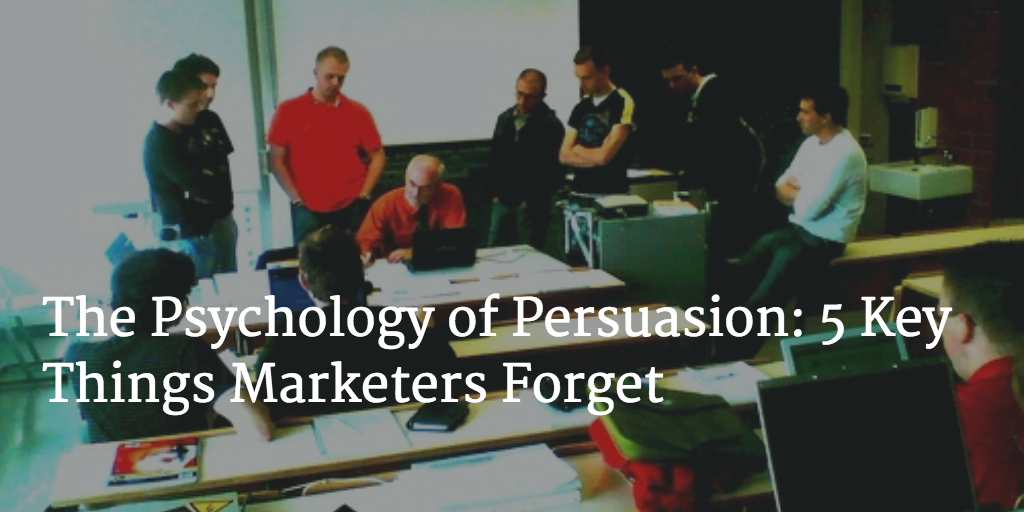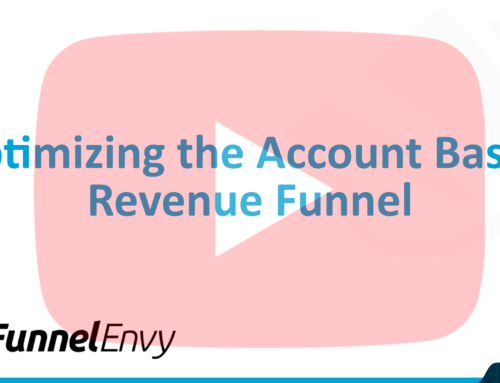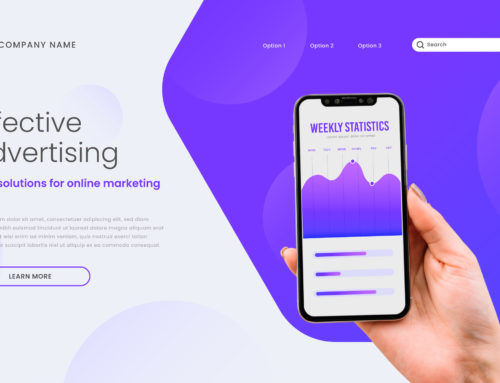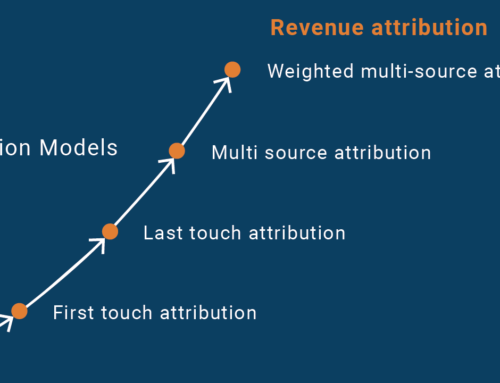You want to make your best case why people should buy your products or services …
You also don’t want to come off like an overly aggressive lawyer or door-to-door salesperson.
Striking the perfect balance between compelling and not too pushy will shoot your conversions through the roof. But finding that persuasion “sweet spot” can be challenging for even seasoned marketers.
Marketing tactics help you organize your actions to produce concrete results: visitors, customers, and sales. Cutting deeper to the principles helps you understand why certain tactics are effective. With a solid grounding in the psychology of persuasion, you can create your own strategies to best suit your niche and specific offers.
Most of us are familiar with persuasion fundamentals if we’ve been in the game long enough. But there are other tactics – tactics your competitors aren’t thinking about – that can help you gain an edge.
Keep reading to find out how.
Photo Credit: figr via Compfight cc
Persuasion Strategies Your Competitors Don’t Think About
On the Funnel Envy blog, we’ve written extensively about the basics of what it takes to be persuasive online. Everything from website design and email marketing to collecting testimonials and supporting offers with strong guarantees plays an important part.
Most of us have a basic understanding of what makes an offer persuasive. We know it when we see it. Often, we open our wallets and purses too!
But it can seem challenging to dissect that experience and create it for potential customers. Once you have the fundamentals in place, what else can you do to make more sales and boost revenue?
Give the following psychology principles a try. They’re widely overlooked by marketers online, and they can mean the difference between making the sale and missing out on it:
5. Limit Prospects’ Choices (with One Important Exception)
If you follow other marketing or psychology blogs, you’ve probably heard about the paradox of choice.
This phenomenon describes how offering people too many choices can backfire. With too many options, you end up stuck in analysis paralysis mode and choose “none of the above” instead of trying to make a complicated, overwhelming decision.
Columbia University professor Sheena Iyengar demonstrated this powerfully in her New York grocery store study. Researchers set up a sampling booth for shoppers to try different flavors of jams. Iyengar found that offering too many flavors – instead of just a few – decreased the chances of people trying any jam at all.
So you don’t want to give your prospects too many options. Just stick to a few to keep things simple. End of the story, right?
Not so fast …
There’s one choice you shouldn’t take off the table. One of the most powerful persuasion strategies? Just reassuring prospects that they have a choice not to buy if they don’t want to.
That might sound counterintuitive, but affirming your prospects’ free will can make them more likely to buy from you. Doing this shows you aren’t desperate for the sale, you aren’t trying to strong arm anyone, and you stand behind the quality of your offers. In essence, you’re trusting people to make the right decision.
Psyblog reported this strategy is most effective in person, but you can still use it online as well. You don’t have to encourage people not to buy, just remind them it’s an option.
Sales expert Bob Burg uses “you may or may not be interested” language early on in conversations with new prospects. He believes that giving people an emotional “out” increases the chances of them buying, which is certainly worth testing. Remind people they can walk away, and track the effect on your conversions. The results just might surprise you.
4. Don’t Gloss Over Your Offer’s Limitations
It’s natural to want to gloss over any weaknesses to what you’re selling. After all, you’re trying to make someone want to buy from you!
But if you get too enthusiastic in your pitch it might come across as hype. In your prospects’ eyes, if it sounds too good to be true, it probably is. They’re less likely to believe your claims, which undermines your credibility.
What if you just came clean about your offer’s shortcomings and limitations?
As great as your product or service is, it isn’t perfect for everyone in every situation. Acknowledging that – something many marketers refuse to do – gives you an enormous boost in credibility. You come off as authentic because you’re keeping the customers’ best interest at heart – you don’t want them to invest in your solution unless you’re sure it will help.
It’s kind of like when you ask a waiter for a recommendation at a restaurant and they steer you away from certain dishes. You feel like they’re looking out for you, and you’re more likely to believe the dishes they do recommend.
You don’t need to celebrate your weaknesses. All you have to do is give people an honest assessment. Research from the University of Illinois compiled the results of over 100 different persuasion studies spanning 50 years. This meta-analysis found that two-sided arguments were more persuasive than one-sided ones across a wide variety of audiences.
Content marketing expert Marcus Sheridan applied this principle with incredible success. Instead of glossing over the weaknesses of the fiberglass pools he sold at his company River Pools and Spas, he wrote up an honest pros and cons assessment that got thousands of page views and number-one rankings on Google:

Image credit: Marketing Experiments
3. Experiment with How You Frame Your Offers
As humans, we seek pleasure and run away from pain. These primal instincts motivate practically everything we do – including who we buy from online.
These two instincts aren’t just two sides of the same coin, though …
Common marketing wisdom says the desire to avoid pain is a stronger psychological trigger than pleasure seeking. That’s why you’ll see so many sales pitches promising people they can save time, save money, and avoid other undesirable experiences.
But this principle doesn’t always hold true. A lot depends on what you’re selling and your particular audience. In some circumstances, the tendency to seek pleasure trumps the desire to avoid pain. So if you aren’t converting as well as you’d like, consider how you’re framing your offer.
If you’re framing benefits negatively – as avoiding undesirable experiences – consider switching things up. What would happen if you framed your offer positively – pulling people towards pleasurable experiences – instead? You could even mix and match the two appeals.
One analysis examined the results of 29 different studies (done on over 6,000 people altogether). What they found flies in the face of common marketing wisdom: positively-framed messages were a little more persuasive than negatively framed ones.
Eat24.com takes a combined approach of negative (avoiding cooking) and positive framing (over a million dishes to choose from):
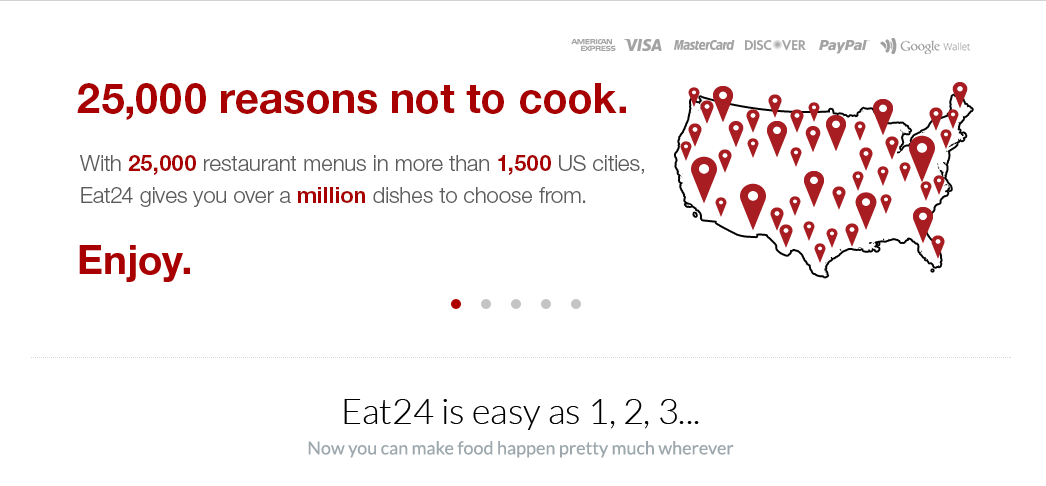
2. Get People to Agree with Something Else First
Getting someone to agree to buy what you’re offering sounds challenging enough …
Persuading someone to agree to several things seems even tougher. It might sound like a lot more work – you have to get people to agree to two things instead of one – but it can help you “prime the pump” when it’s time to make the sale.
The idea is this: getting someone to agree with you on an unrelated thing first can encourage them to agree to your offer shortly afterward.
It’s kind of like the old sales technique of doing whatever it takes to get the prospect saying “yes” before going for the close. What you get people to agree with can be totally unrelated to your offer and still be effective.
If you can get someone to agree with an unrelated (and non-controversial) issue, the effect of that agreement lingers into your next issue (your offer).
That works well if you have a philosophy, mission statement, or worldview weaved into your website and other branding materials. Outdoor clothing company Patagonia does this well, framing their entire business around a message of conservation and environmental sustainability:
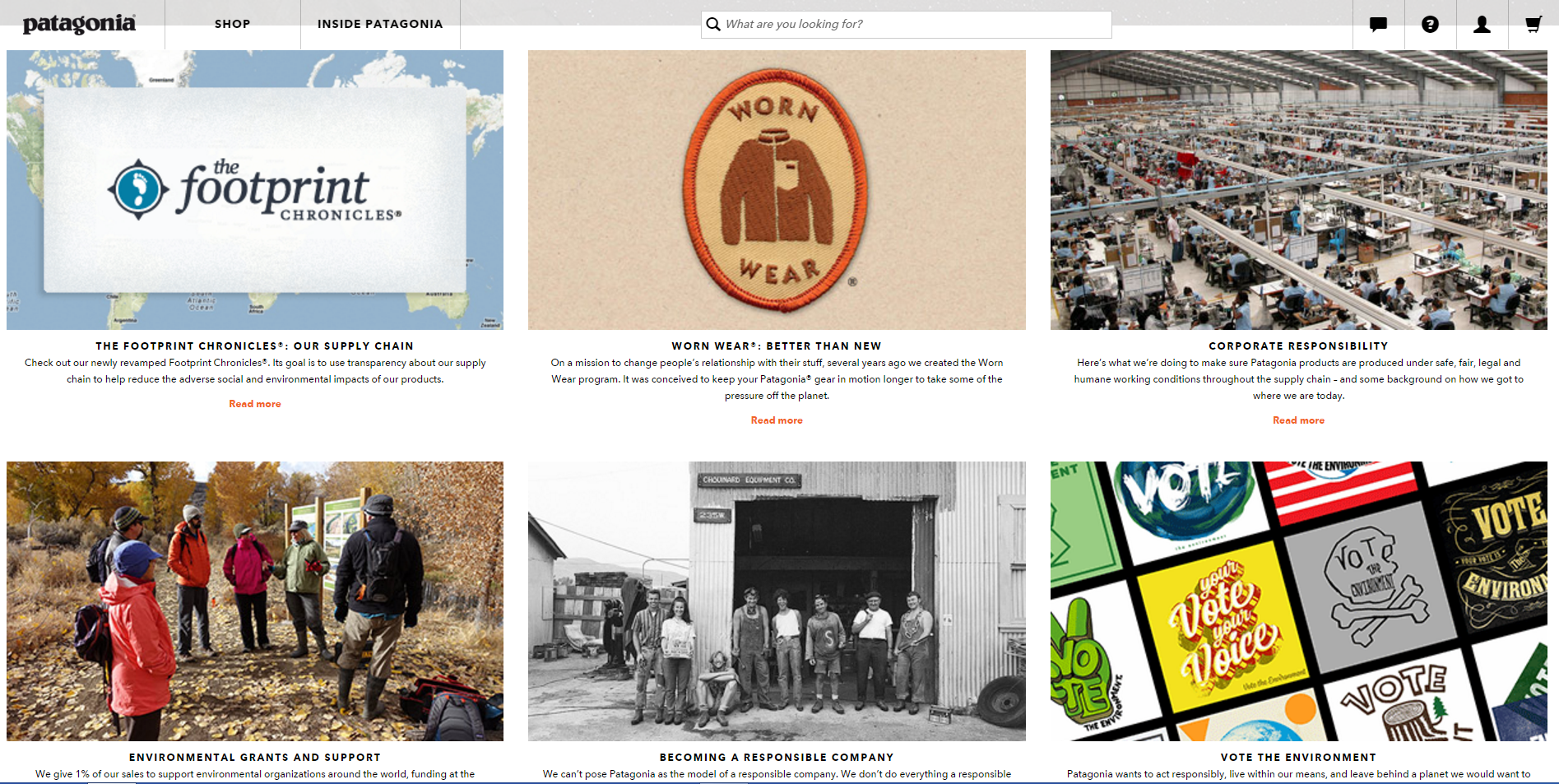
A lot of people see these kinds of statements on the Patagonia website and immediately agree with them. This makes them more likely to agree to buy something shortly afterward.
One research study explored the “lingering effects” of messages people agree with. In one test, study participants listened to a speech by Barack Obama or John McCain then watched a Toyota television ad right after. Republicans found the ad more persuasive after watching the McCain speech, but Democrats experienced the opposite effect. They found the ad more persuasive after watching the Obama speech.
1. Appeal to Primal, Emotional, and Rational Cues
Humans are complicated with complicated brains to match.
Many marketing messages focus on only one psychological trigger – whether it’s rational, emotional, or primal. Failing to hit all three can make the persuasive appeal come up short.
A holistic approach can work better. If you’re able to weave together different appeals and persuade from multiple angles, you can drive a lot more conversions.
The “three-systems” brain model can help you make sure you’re hitting all the right triggers. Nathalie Nahai, The Web Psychologist, put together a great SlideShare outlining the three systems and how to trigger them:
- Primal cues. The primal brain is common to all animals. It’s concerned with your body’s vital functions and survival. Things like food, security, and the drive to reproduce all fall within this system. Primal cues include food, sex, scarcity, and motion.
- Emotional cues. The emotional brain includes your limbic system, covering fear, trust, happiness, sadness, and dopamine. Appeal to the emotional brain with body language, storytelling, pleasure and pain, and images of faces to trigger empathy and mirror neurons.
- Rational cues. The rational brain is unique to humans. It’s used for higher cognitive functions like language, planning, and problem-solving. Rational cues include listing specs/benefits, product or service demos, offering statistical evidence, and reassuring customers they made the right decision to buy (post-rationalization).
Are you appealing to these different cues in your marketing messages? Too many businesses get caught up in the rational cues but neglect the others. Take a look how Fitbit hits all three cues in the copy for their Surge model:
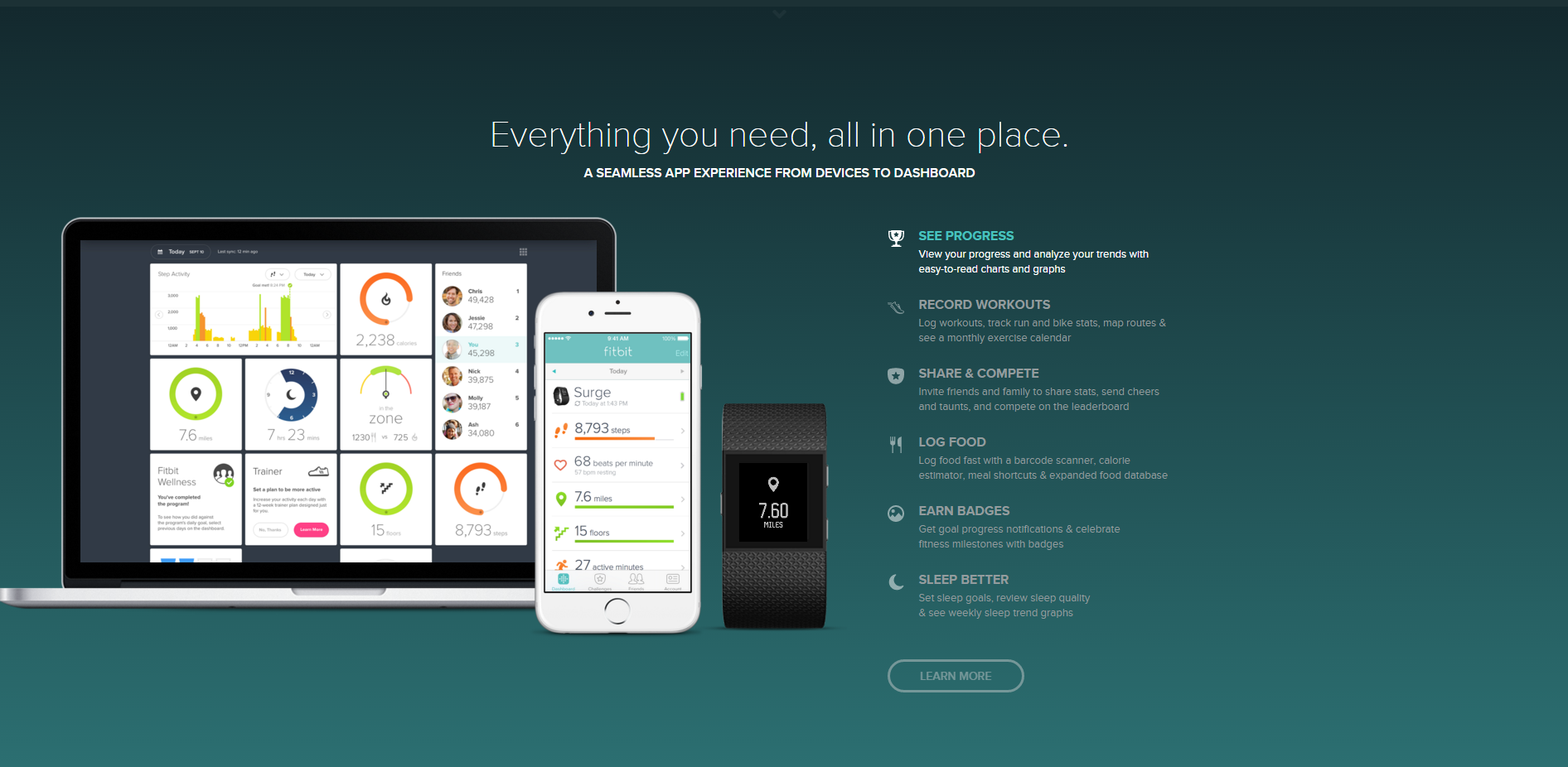
We’ve got primal cues (sleep better, meal shortcuts), emotional cues (invite friends and family, send cheers and taunts, get progress notifications, celebrate fitness milestones), and rational cues (logging, tracking, and analyzing) all in one.
An Important Part of Your CRO Strategy
You already have an excellent product or service.
Changing how you present it might be the key to increasing your revenue. When you pay attention to these psychological principles and apply them – things 99% of your competitors aren’t even thinking about – you gain a huge strategic advantage.
With time, a slightly more persuasive message compounds to huge conversion gains. And you can have that … if you’re willing to take action. Experiment with your approach, track the results, and optimize your messaging for persuasive appeal – just like any other element of your CRO strategy.
Which of these persuasion tips are you using in your business? Leave a comment below and let me know!
